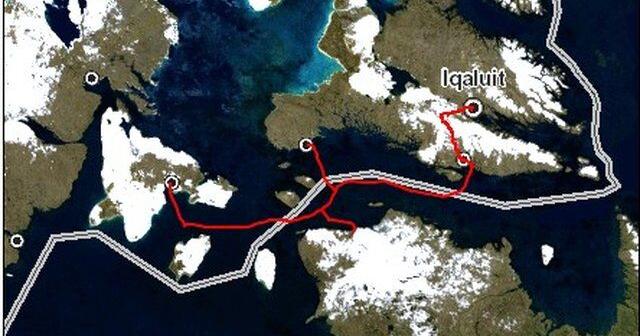The Government of Nunavut plans to conduct a marine survey either this year or in 2026 as part of its plan for a fibre-optic internet network for Iqaluit and three other communities.
However, it is waiting on several approvals before it can begin.
“The survey is required to inform detailed design and support regulatory permitting for the future marine cable installation,” said Greg Belanger, spokesperson for the Department of Transportation and Infrastructure, in an email last week.
The Kivalliq-Baffin Connector is the name the GN has given its planned 1,050-kilometre-long, high-speed internet cable that will link Iqaluit, Kimmirut, Kinngait and Coral Harbour to Nunavik’s fibre network.
When Kativik Regional Government laid down cable across Nunavik’s Hudson Bay coast communities in 2023, it left a branch off the coast of Salluit for a potential Nunavut connection.
In February, the Canadian Radio-television and Telecommunications Commission approved $271.9 million in funding from its Broadband Fund for the GN to build its connector network.
The GN applied this month to the Nunavut Impact Review Board to conduct a marine survey for the connector project.
The survey would take 35 to 45 days and occur during “the open water season of 2025 or 2026,” according to the project description.
Some of the tasks of the survey outlined in a document on its NIRB project page include sonar testing and sampling seabed sediment in the waters around the potential route, as well as locating the branching unit cable near Salluit.
To conduct the survey, the GN requires approvals from Nunavut Research Institute, the Department of Fisheries and Oceans Canada, and Crown-Indigenous Relations and Northern Affairs Canada, Belanger said.
On Wednesday, the impact review board completed its screening, stating that a review of the project is not required.
The marine survey itself is set to cost $7.48 million, which is covered by the $271.9 million the GN received from the CRTC, Belanger said.
Earlier this year, Transportation and Infrastructure Minister David Joanasie estimated a 2031 completion date for the network as a whole.
“There is no change” to that timeline, Belanger said.
The Canadian Press. All rights reserved.
